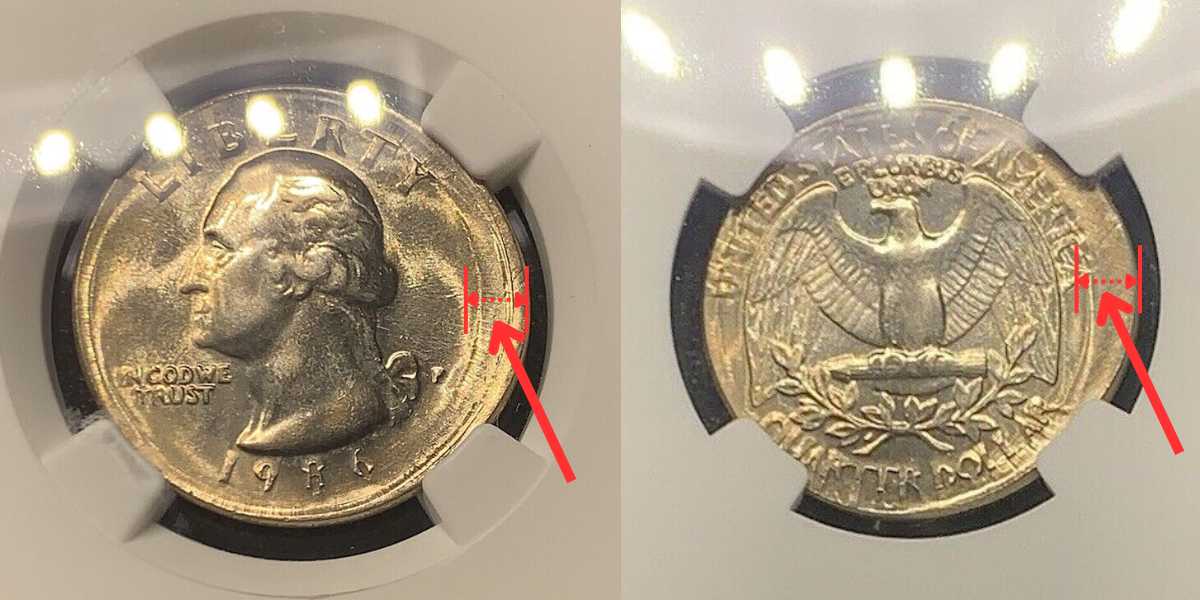The 1986 Quarter is a common coin, and a lot of people want to know if it is worth anything. If you’re one of such people, then you’ve come to the right place as this article covers everything about the value of the 1986 Washington Quarter, including values for proof and error coins.
1986 Quarter: Grades and Values
The 1986 Washington Quarter is a readily available coin. Circulated coins of all grades are worth between $0.25 and $0.90. While uncirculated quarters cost $1 to $5.
But if you have a brilliant uncirculated or gem uncirculated coin, these can fetch you $15 and about $3,000 respectively.
| 1986 Quarter: Grade and Value Chart | ||||
| Mint | Extremely fine (XF40) | Uncirculated
(MS60) |
Brilliant uncirculated
(MS65) |
Gem uncirculated
(MS68) |
| 1986-P Quarter | $0.4 | $1 | $15 | $3,000 |
| 1986-D Quarter | $0.4 | $1 | $15 | $3,750 |
| 1986-S Quarter (Proof )
|
– |
$2.5
|
$5 (DCAM)
|
$9 (DCAM) |
1986 Quarter Appearance and Features
The 1986 quarter is the 55th coin in the Washington quarter dollar series. The coin has a reeded edge, measures 24.3mm in diameter and weighs 5.67g. It’s made of 75% copper and clad in 25% nickel and it has a mintage of over 1 billion.
The obverse of the 1986 Quarter
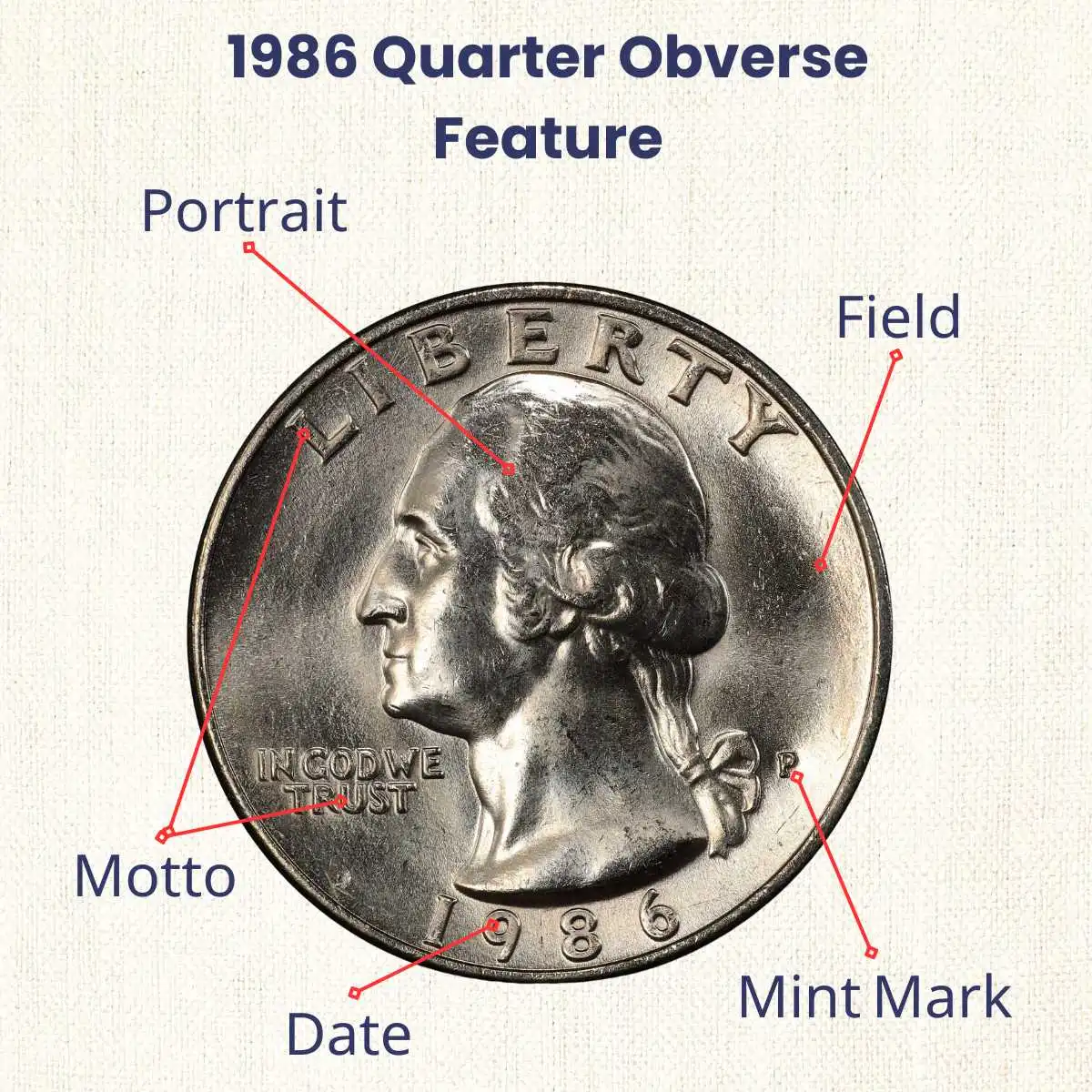
The coins maintain the original obverse designed by James Flanagan in 1934. This design has the following elements
- Left facing image of the first United States president, George Washington
- The word “LIBERTY” Arching over the president’s head
- The date, 1986 at the bottom of the coin
- The motto “IN GOD WE TRUST” to the left of Washington
- P, D or S Mintmark to the right of Washington
The reverse of the 1986 Quarter
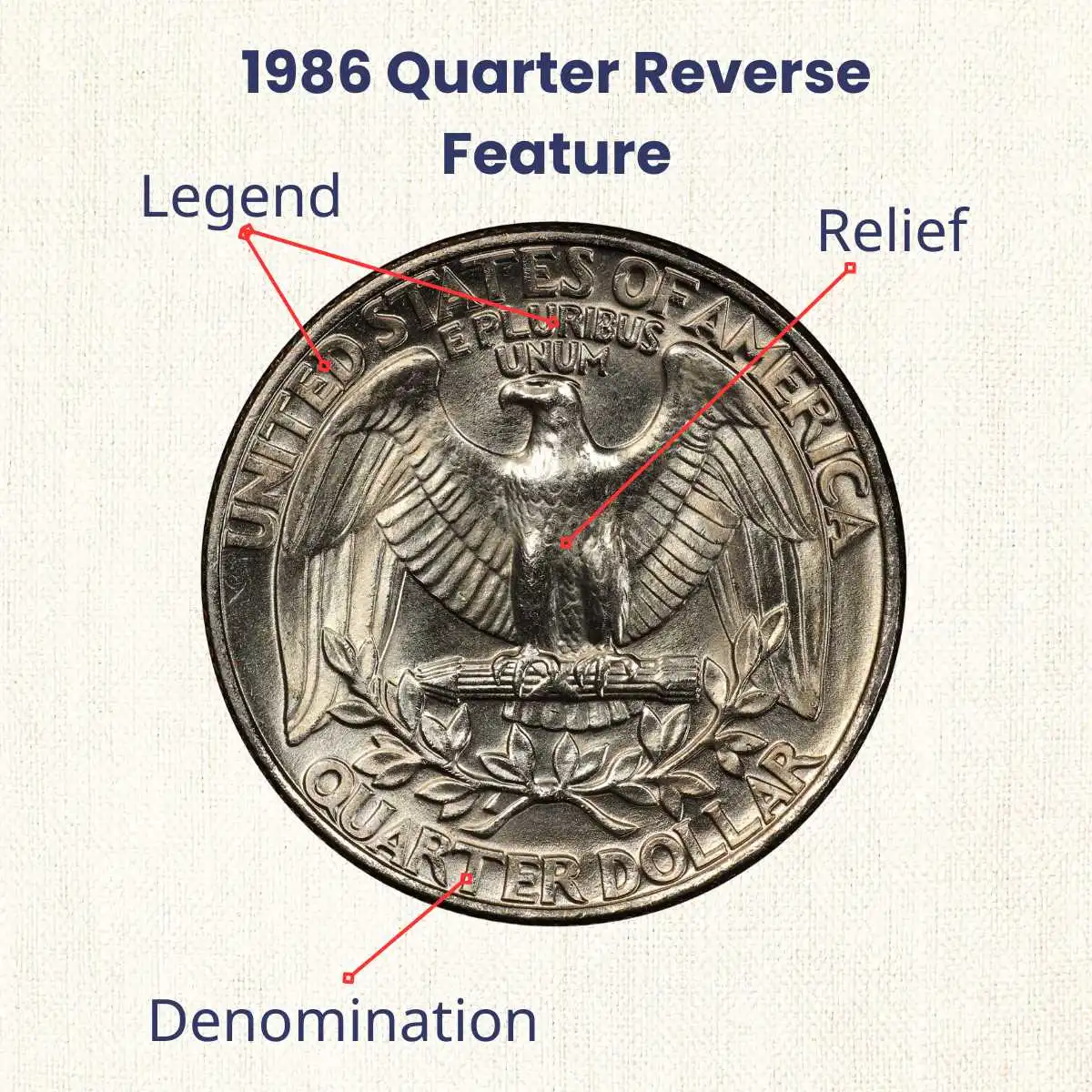
The reverse of the coin was also designed by James Flanagan, and it incorporated elements such as;
- An eagle with widespread wings on a bundle of arrows
- Two olive branches below the eagle
- The face value “QUARTER DOLLAR” at the bottom
- The Latin phrase “E PLURIBUS UNUM” written above the eagle
- The phrase “UNITED STATES OF AMERICA” curving along the edge of the top half of the coin
| 1986 Washington Quarter Features | |
| Face value | 25 cents ($0.25) |
| Composition | 75% copper and 25% nickel |
| Shape | Round |
| Diameter | 24.3 mm |
| Weight | 5.67 g |
| Edge | Reeded |
| Mintage | 1,059,497,993 and 3,010,497 proofs |
1986-P Quarter: Value and Grading

The Philadelphia Mint struck approximately 505 million Washington quarters, and they were only the 7th Washington quarters to have a P mint mark.
Due to the high mintage and the fact that the 1986-P isn’t a key date coin, the numismatic value is rather low. That’s especially true for circulated coins which are worth little more than the face value of $0.25. Even the highest grades of circulated coins are not up to $1.
The same thing applied to the lower grade uncirculated coins. You can get an MS60 for $1 while an MS65 will cost you $15.
Brilliant uncirculated MS66 quarters are priced at $75. This is the point at which the 1986-P quarters begin to see some significant value, as gem coins of MS67 and MS67+ cost $2,000 and $3,000 respectively.
The story is not different at auctions, as the present record for the 1986-P Washington quarter is $2,880 for an MS67 sold by Heritage Auctions in 2019.
| 1986 No Mint (P) Quarter Value List | |
| Grade | Value |
| About Uncirculated (50) | $0.5 |
| MS 60 | $1 |
| MS 61 | $1 |
| MS 62 | $2 |
| MS 63 | $5 |
| MS 64 | $5 |
| MS 64+ | $6 |
| MS 65 | $15 |
| MS 65+ | $24 |
| MS66 | $75 |
| MS 66+ | $300 |
| MS 67 | $2,000 |
| MS 67+ | $3,000 |
1986-D Quarter: Grading and Value

In 1986, the Denver Mint produced approximately 504 million quarters, almost as much as the Philadelphia Mint.
This high mintage and the recent date mean that this coin is widely available even in brilliant uncirculated grades.
The 1986-D quarters have similar values as the 1986-P. Indeed, circulated coins range in value from $0.25 to $0.80 and uncirculated grades start at $1 for MS60 while MS65 costs $15.
But after MS65, the prices start to differ, and brilliant uncirculated and gem circulated 1986-D quarters cost less than Philadelphia quarters of the same grade. A 1986-D MS66 quarter goes for $36 and an MS67 goes for $475, which is about ¼ of what a P quarter is worth.
The reason for this big price difference, despite the two coins having roughly equal mintages, is that there are more gem uncirculated 1986-D quarters than available in the market, and the increased supply reduces its value.
The low value extends to auction sales too, as the recent auction record for the 1986-D quarter stands at $408 for an MS67 sold by Heritage Auctions. Again, this amount is significantly less than the auction record for the 1986-P.
| 1986-D Quarter Value List | |
| Grade | Value |
| About Uncirculated (50) | $0.4 |
| MS 60 | $1 |
| MS 61 | $1 |
| MS 62 | $1 |
| MS 63 | $2 |
| MS 64 | $5 |
| MS 64+ | $6 |
| MS 65 | $15 |
| MS 65+ | $20 |
| MS66 | $36 |
| MS 66+ | $75 |
| MS 67 | $475 |
| MS 67+ | $3,750 |
1986-S Proof Quarter: Grade and Value
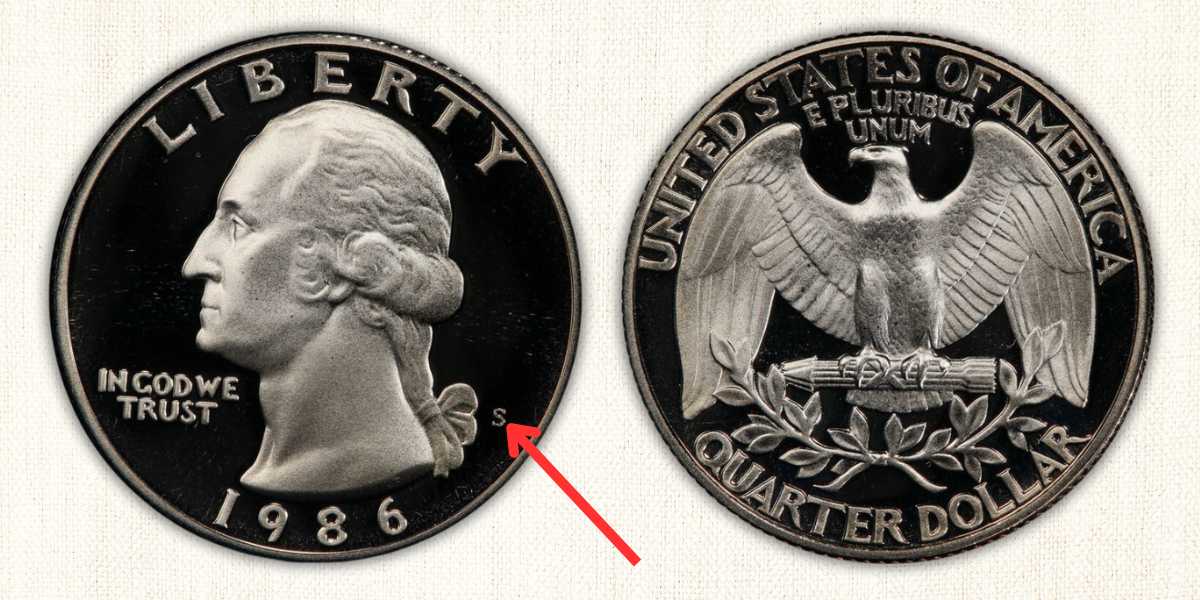
Proof strikes of the 1986 Washington quarter were minted by the San Francisco Mint, and the mintage was about 3 million. As such the coins are common in all grades, even perfect PR70 coins can be found easily and at little cost.
A PR60 costs about $2.5, and a brilliant MS66 is worth $8. Gem uncirculated proofs are of course more expensive, but not by any significant margin, as you can get an MS69 for $16 and a perfect PR70 will only cost you $34.
Surprisingly, the auction record for the 1986-S proof quarter is considerably high at $552 for a PR70 DCAM sold by Heritage Auctions in 2003. But this is a 20-year record and doesn’t reflect the present value of the coin. No 1986-S proof strike has been auctioned for more than $80 in recent times.
| 1986 S Quarter Value List | |
| Grade | Deep Cameo (DCAM) |
| PR 60 | $2.5 |
| PR 61 | $5 |
| PR 62 | $5 |
| PR 63 | $5 |
| PR 64 | $5 |
| PR 65 | $5 |
| PR 66 | $5 |
| PR 67 | $6 |
| PR 67+ | $7 |
| PR 68 | $7 |
| PR 68+ | $9 |
| PR 69 | $16 |
| PR 70 | $34 |
1986 Washington Quarter Dollar: Error Coins
The evidence suggests that there are more Philadelphia error coins than Denver error coins. Typical 1986-P errors include broad strikes, double strikes, and die errors.
1986 P Washington Quarter Missing Letters in Reverse Error
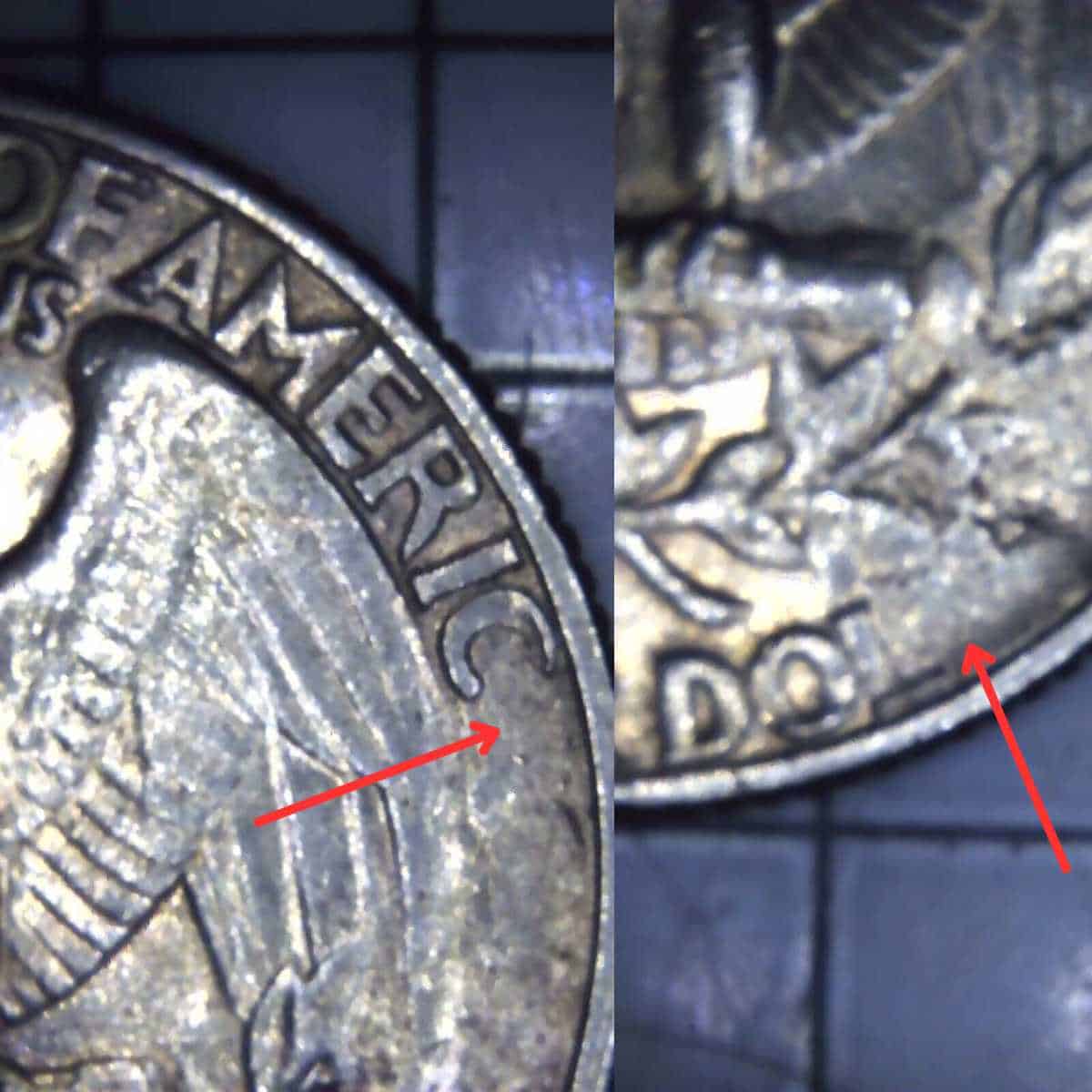
This 1986-P quarter is missing some letters on the reverse.
The error is at the edge and follows the curve of the coin from east to south, and can be seen on the obverse and reverse of the coin. There are no obverse design elements at the affected location, but you can still see that the area appears somewhat lumpy.
On the reverse, there are design elements at the affected location. At the base, the word DOLLAR is missing the last three letters, and at the side, the word AMERICA is missing the final letter.
The error is most likely due to a weak strike, but it could also be caused by a worn die. The coin is a circulated quarter and is valued between $80 to $85.
1986-P 25C Washington Quarter Die Adjustment Error

This 1986-P quarter suffered from improper die settings.
Die adjustment errors happen when the dies are set too far from the planchet. Because of the wide gap, the dies do not make full contact with the planchet when struck, and only a partial impression is made on the planchet, elements on the outer edge do not appear.
For this quarter, only the image of George Washington is clearly visible on the obverse, you can also see the date and lettering on the edge but they are very faint. The reverse is the same thing; only the outline of the eagle is visible.
Despite this error, the coin is NGC certified as Mint error, and valued at $36.
1986 P 25C Broad struck Mint Error
Another 1986-P quarter, this one has a broad strike error. Broad strikes occur when the restraining collar, which shapes the coin’s edge, fails, causing the coin to expand when struck.
The result is a coin like this, which has all the design elements but is flatter and wider than other coins. There’s also a blank space around the coin face.
This broad Struck coin has an NGC grading of MS65. It sells for $375.
1986-P Washington Quarter Broad Struck and Double Strike Error
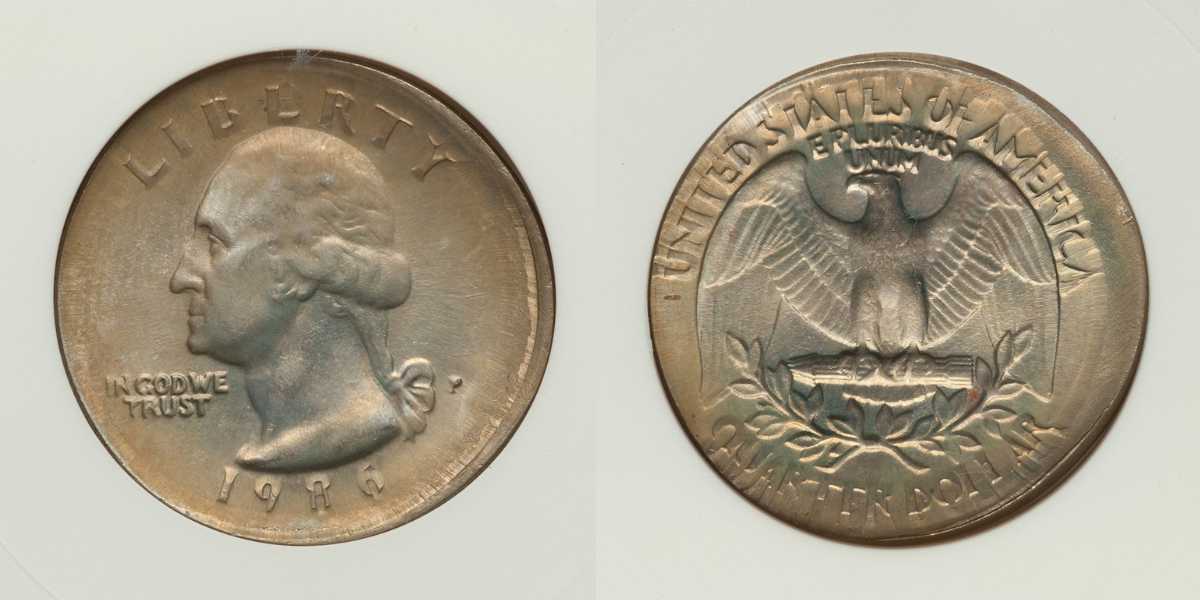
Yet another 1986-P error quarter. This coin combines two different errors: a broad strike and an off-center second strike.
The obverse is mostly unaffected, except for the date which appears somewhat flattened. The second strike is more obvious on the reverse, showing flattened-out and elongated letters. Additionally, both obverse and reverse images are oriented towards the 8 O’clock position on the coin, and the blank area is at the opposite end (2 O’clock).
What happened with this coin is that the first strike produced a broadstruck coin which was only partially ejected from the dies so the coin got a second off-center strike.
The coin is an ANACS MS64 and valued at $129.25.
1986 P Washington Quarter 10% Off center, and Broad Strike Error

This error coin is very similar to the one above. The key difference is that it received only one strike, which was off-centered due to incorrect planchet positioning. The broadstrike was, of course, due to a failure of the restraining collar.
The coin is a circulated 1986-P quarter and costs $40 to $50.
1986-P 25C Quarter 20% Off-Center Error

This is another 1986-P quarter with an off-center strike.
On the obverse, the design is pushed toward the top right of the coin, leaving the bottom left portion blank. On the reverse, the design is toward the bottom right, leaving the top left blank. The designs are incomplete on both sides.
This error coin has been graded as AU55 by ANACS. It is valued at $28.
1986-P Washington Quarter Struck-Through Error
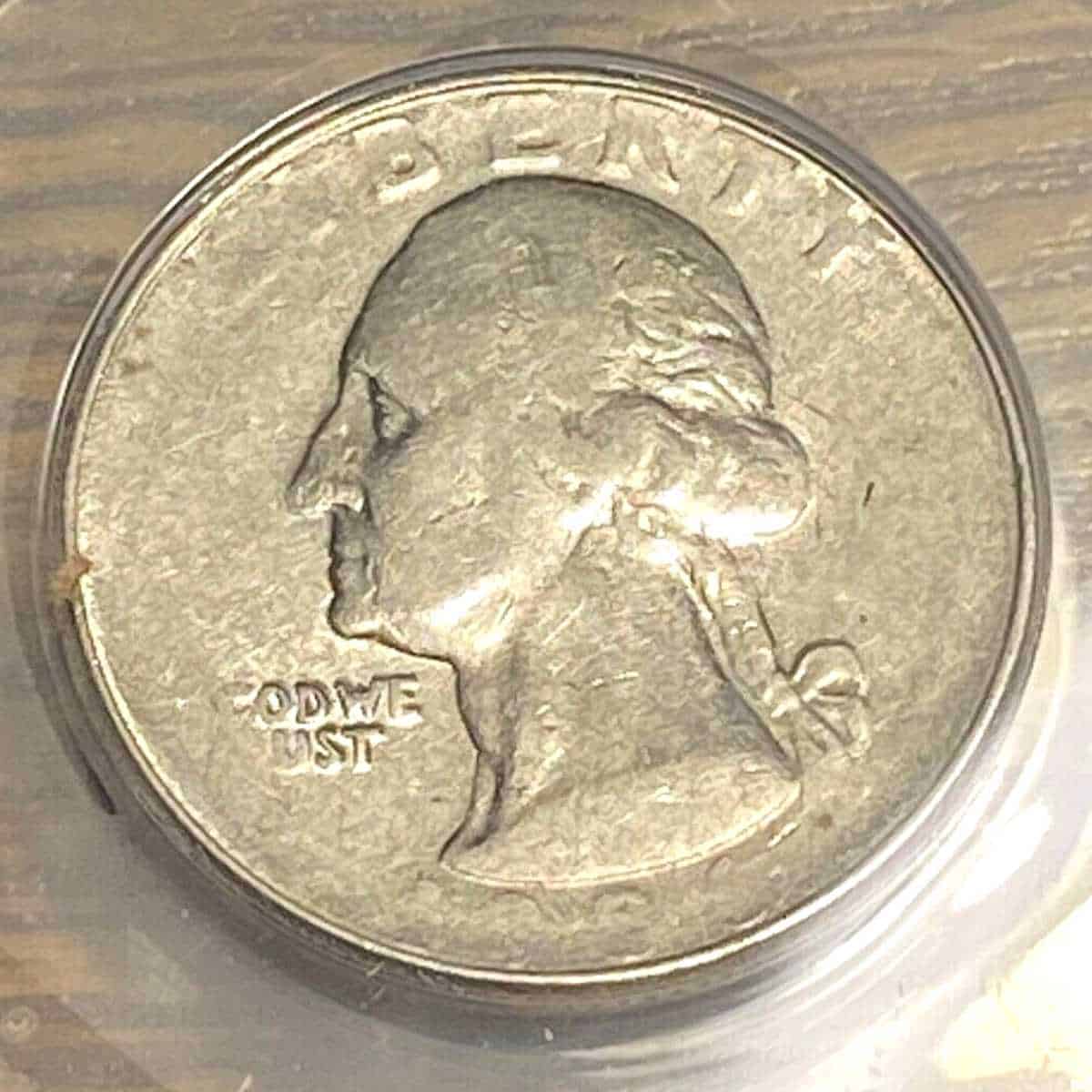
This ANACS AU55 1986-P quarter has been struck through grease, making the obverse image a bit fuzzy.
Strike-through errors occur when a different material gets between the planchet and the dies, preventing the die from imprinting on the planchet. In this case, the interfering material was grease, which filled the crevices of the die. The result is an obverse image with only faint lettering. The quarter is worth $90.
1986 P Washington Quarter Clashed Die Error
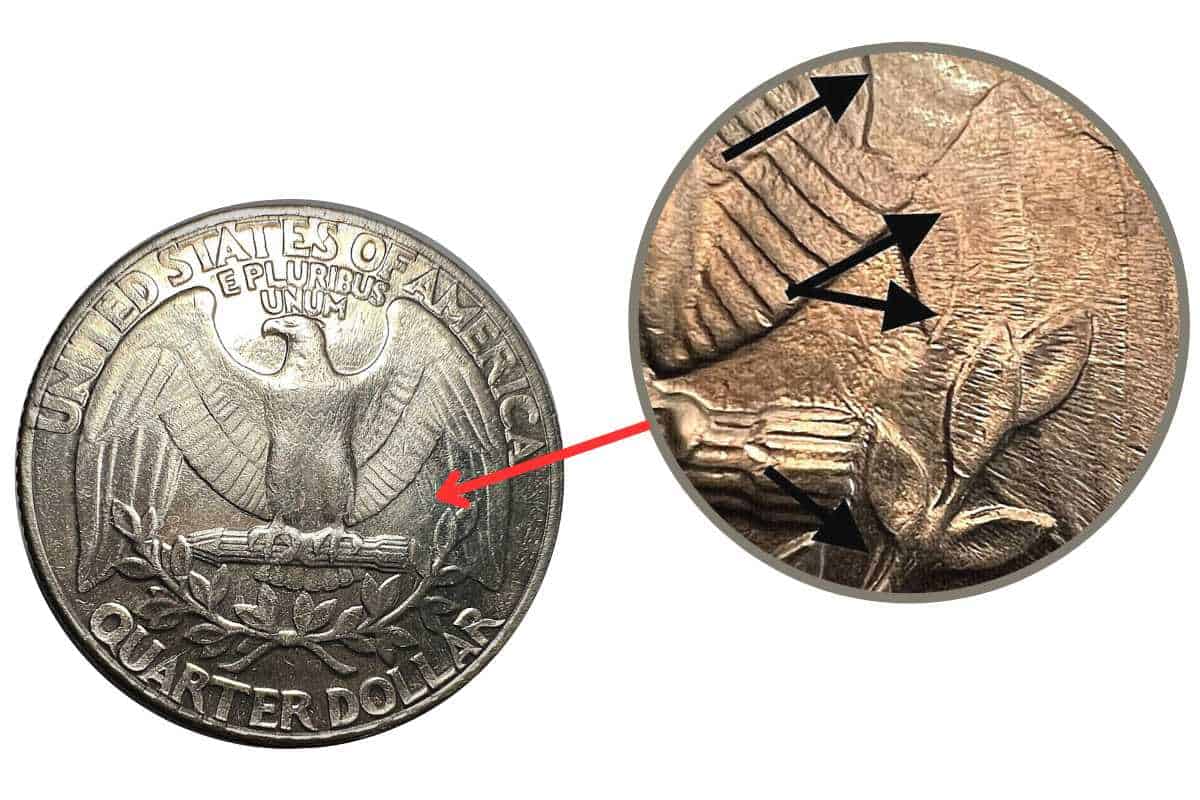
Here is another 1986-P quarter dollar. The coin has a minor clashed die error.
Clashed die error coins have details of the reverse showing up on the obverse and vice versa. Such coins have been struck by clashed dies, which are dies that have collided without a planchet separating them and, as a result, have left partial impressions on each other.
For this particular coin, the effect of the clashed dies is minor, but you can still see hints of it. For instance, on the obverse, there’s a faint outline of leaves behind the President’s head. The price of this error 1986 quarter is $27
1986 P Quarter with Indent Mint Error
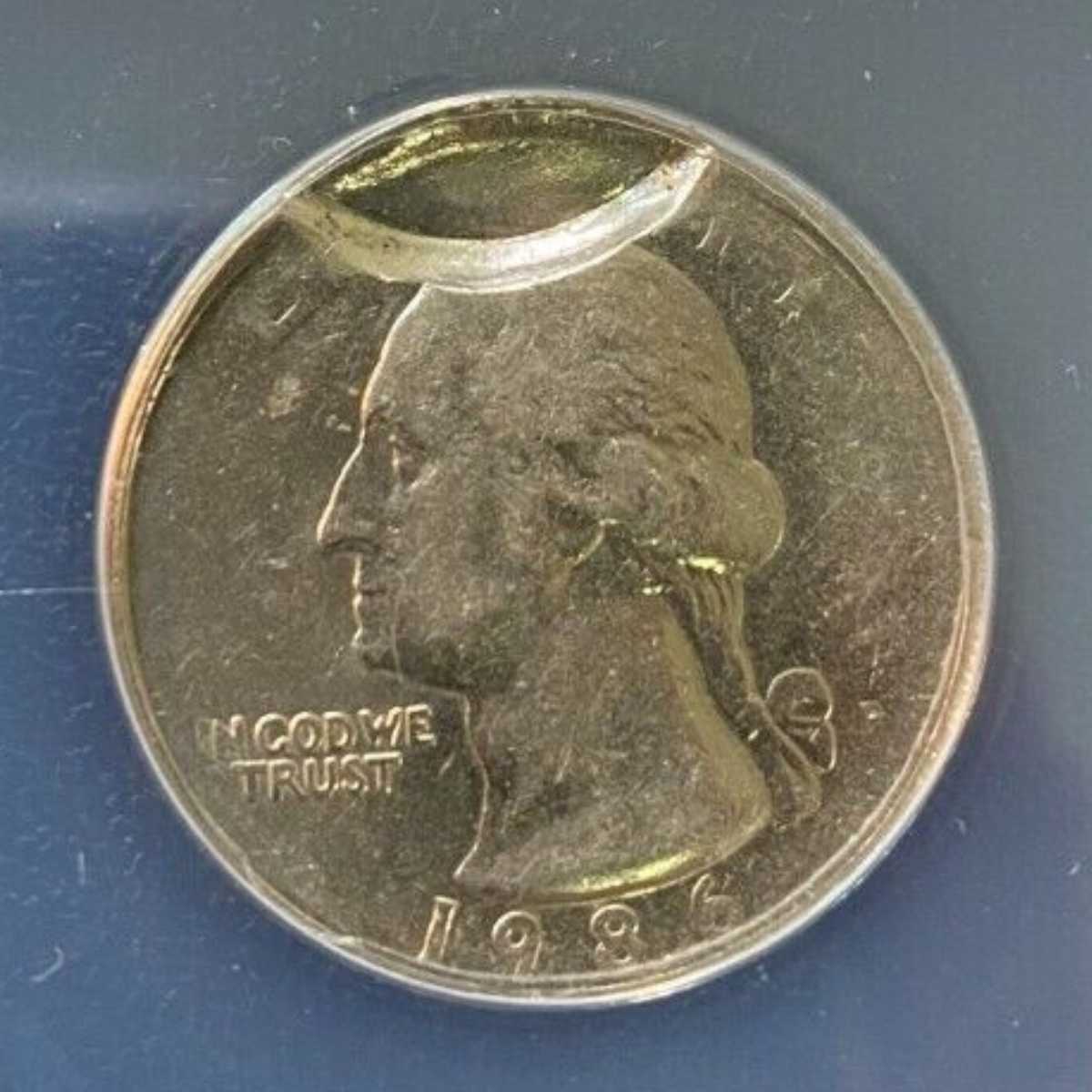
Another ANACS-certified 1986-P quarter, this one has an indent error.
Indents occur when a struck planchet doesn’t exit the dies completely. The part that remains then overlaps a new planchet. When this new planchet is struck, the overlap between the two planchet forms the indent. Indents could be on the obverse or reverse, depending on the position of the overlap.
For this coin, the indent is on the obverse, right above Washington’s head. The quarter is ANACS grade AU50 and goes for $100.
FAQ: What is the value of a discolored 1986 Quarter?
It’s not uncommon to see black or brown quarters. The discoloration happens due to chemical reactions with elements in the atmosphere.
A discolored 1986 quarter will not have any value besides its face value of $0.25. There are two reasons for this. First is the present value of 1986 quarters which is rather low especially for circulated coins.
Secondly, the corrosion affects the coin’s appearance and greatly reduces its value as a collectible.
However, while your discolored quarter may not have any numismatic value, it will still serve as legal tender to pay for goods or services.
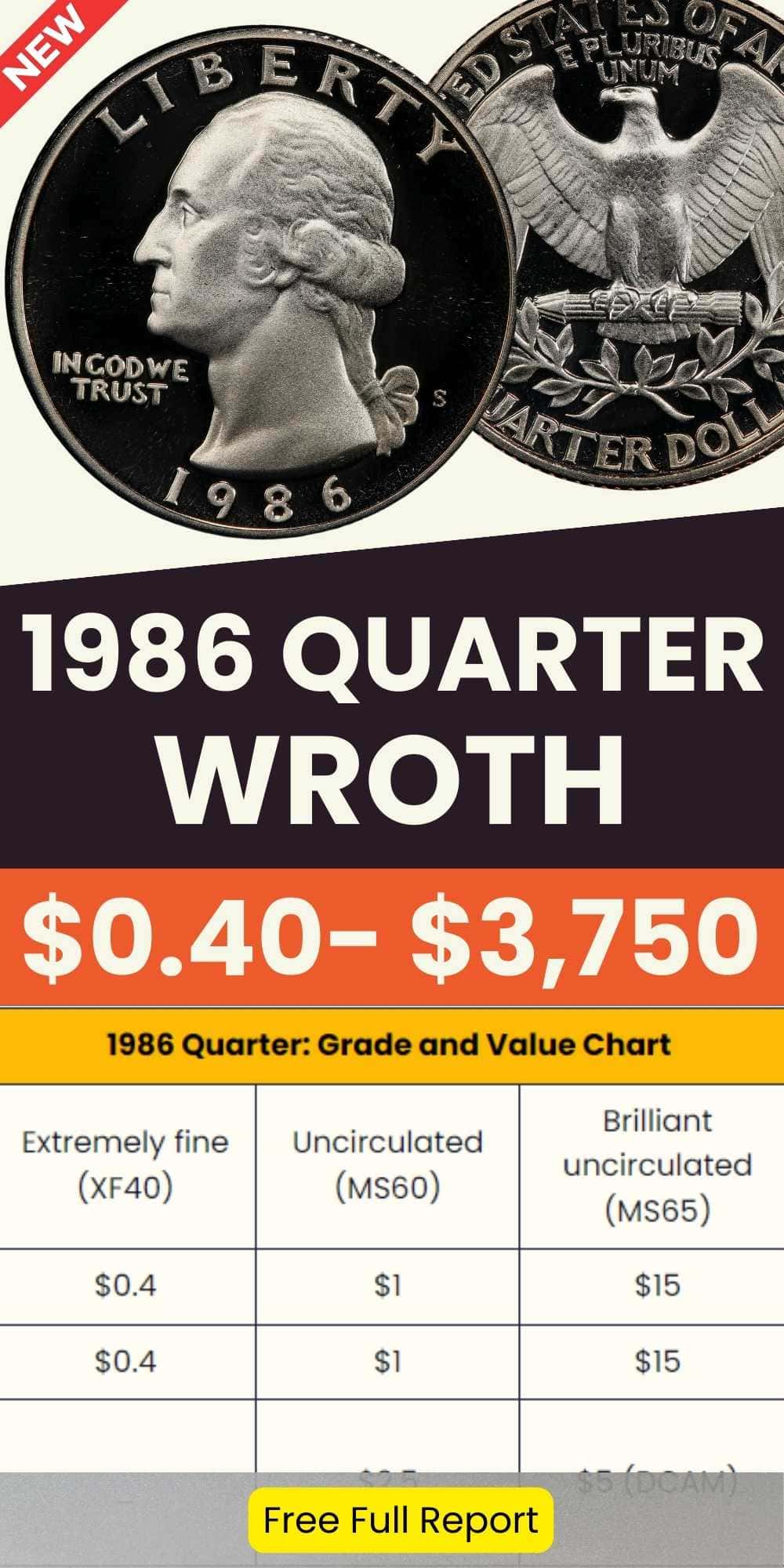
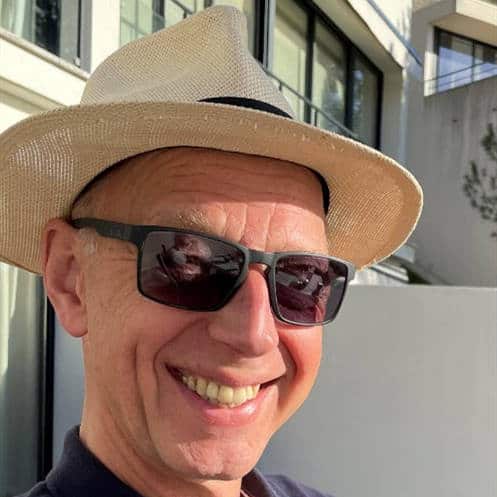
Jenson is a professional numismatist, a dedicated coin collector, a graduate of the College of Business at Oregon State, a life member of the American Numismatic Association (ANA), and an overall coin nerd. He is the founder of Coin Value List.

